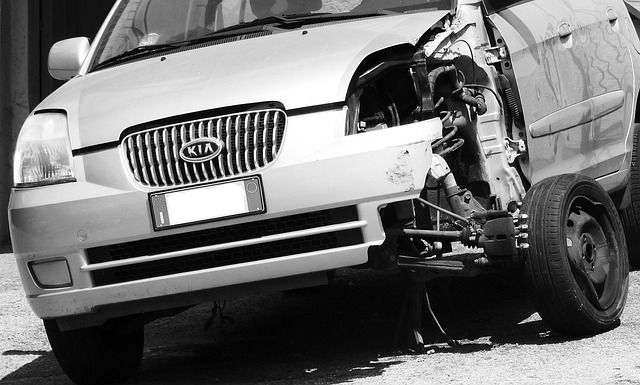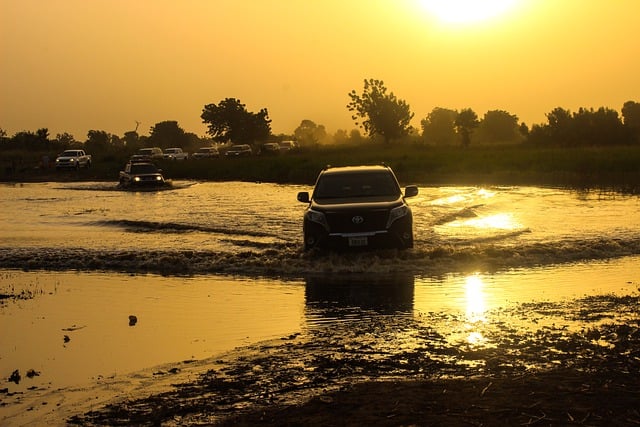Comprehensive car insurance provides protection against unforeseen events beyond typical accidents and theft. It covers natural disasters, vandalism, animal strikes, and accidental damage to personal belongings in the vehicle. Understanding what's covered is crucial for peace of mind. This type of insurance acts as a safety net for unexpected situations, with policies offering broad coverage but excluding specific perils like floods or high-risk driving unless added through riders. Reviewing policy details and tailoring choices to individual needs ensures optimal protection. Comprehensive insurance offers broader coverage than standard liability policies, giving drivers peace of mind in various circumstances. When filing a claim, promptly notify your provider, gather required documents, prepare for an adjuster's inspection, and expect a timeline for resolution.
In today’s world, having the right car insurance is non-negotiable. Among various options, comprehensive car insurance stands out as a game-changer, offering protection against unexpected events like accidents and theft. This article delves into the intricacies of comprehensive car insurance, exploring what it covers, when it applies, and common exclusions. We’ll guide you through comparing policies, understanding deductibles, and navigating claims processes, empowering you to make informed decisions and ensure peace of mind on the road.
Understanding Comprehensive Car Insurance: A Deeper Look

Comprehensive car insurance, often overlooked but immensely valuable, provides protection against a wide range of risks beyond typical accidents and theft. Unlike collision coverage that primarily focuses on vehicle damage from crashes, comprehensive insurance covers losses from various perils, including natural disasters (like floods or storms), vandalism, animal strikes, and even accidental damage to personal belongings inside the car. It essentially acts as a safety net for unexpected events.
When you opt for comprehensive car insurance, you can rest assured knowing that your vehicle and its contents are secured. This includes protection for items like electronics, GPS devices, and luggage, which can be particularly valuable if they’re stolen or damaged during an event covered under the policy. Understanding what’s included in comprehensive coverage is crucial as it can significantly impact your peace of mind on the road.
What Situations Does Comprehensive Coverage Apply To?

Comprehensive car insurance, often referred to as ‘all-risk’ coverage, offers protection for your vehicle in a wide range of situations beyond the typical perils covered by collision insurance. This type of policy is designed to shield owners from financial burden during unforeseen events that may damage or steal their vehicles.
What does comprehensive car insurance cover? It includes protection against natural disasters like floods, storms, and earthquakes, as well as man-made hazards such as vandalism, theft, and animal-related incidents. This coverage also extends to damages caused by falling objects, like branches or construction site debris, and even accidental damage while parked. However, it’s important to note that comprehensive insurance typically does not cover normal wear and tear, maintenance issues, or damages resulting from driving under the influence.
Common Exclusions and Limitations to Consider

When considering insurance for car accidents and theft, it’s crucial to understand what comprehensive car insurance covers and be aware of common exclusions and limitations. While comprehensive car insurance, as the name suggests, offers broad protection, there are still certain events and circumstances that are not included in the policy. For instance, natural disasters like floods or earthquakes typically fall outside the scope of standard auto insurance policies, unless specific riders have been added to cover these perils.
Additionally, some policies may exclude coverage for vehicles used for racing, stunt driving, or other high-risk activities. Personal belongings left in a vehicle or stolen during an incident that wasn’t directly related to a car accident or theft might not be covered either. It’s essential to read the policy document carefully and clarify any uncertainties with your insurance provider to ensure you’re fully aware of what’s included and excluded from your comprehensive car insurance coverage.
Comparing Policies: Finding the Best Fit for Your Needs

When comparing policies, it’s crucial to understand what each offers in terms of coverage. Comprehensive car insurance, for instance, covers a wide range of incidents beyond accidents and theft, including natural disasters, vandalism, and even animal-related damage. This type of policy is a game-changer for drivers who want peace of mind knowing their vehicle is protected from various unforeseen circumstances.
While accident and theft coverage are essential, comprehensive insurance provides additional benefits that can make it the best fit for your needs. By thoroughly reviewing the policy details, you can choose a plan that aligns with your driving habits, lifestyle, and budget, ensuring you’re not paying for unnecessary protections while still being adequately covered when unexpected events arise.
The Role of Deductibles in Comprehensive Car Insurance

Comprehensive car insurance is a type of coverage that goes beyond the standard liability policies, offering protection against a wide range of potential risks. When it comes to what does comprehensive car insurance cover, this policy typically includes damage or loss resulting from events other than accidents, such as natural disasters, theft, vandalism, and even animal-related incidents. It’s designed to provide peace of mind by ensuring that you’re financially protected in various unforeseen circumstances.
One key component of comprehensive car insurance is the deductible, which represents the amount you’ll pay out of pocket before your insurance coverage kicks in. Choosing an appropriate deductible level is crucial as it directly impacts your premium costs and the extent of protection. A higher deductible usually leads to lower monthly payments but requires a larger sum to be paid immediately if a claim occurs. Conversely, a lower deductible means higher premiums but guarantees less out-of-pocket expense in case of a claim. Understanding this balance is essential when navigating what comprehensive car insurance covers and how it can best suit your needs.
How to File a Claim and What to Expect

How to File a Claim and What to Expect
When it comes to filing an insurance claim after a car accident or theft, understanding the process is crucial. The first step is to notify your insurance provider as soon as possible. Most companies have a 24/7 claim line or an online portal where you can initiate the claim. During this initial contact, provide your policy number, personal details, and information about the incident. Be prepared with essential documents like police reports, medical records (if applicable), and vehicle registration.
What does comprehensive car insurance cover? This depends on your specific policy, but it generally includes protection against theft, vandalism, natural disasters, and damage from road hazards. After filing a claim, an adjuster will review the details and assess the damages. They may inspect your vehicle and, in some cases, require repairs at a network garage. Keep all receipts and communicate any concerns to ensure a smooth claims process. Expect a timeline for resolution, during which you might need temporary transportation if your car is not drivable.
